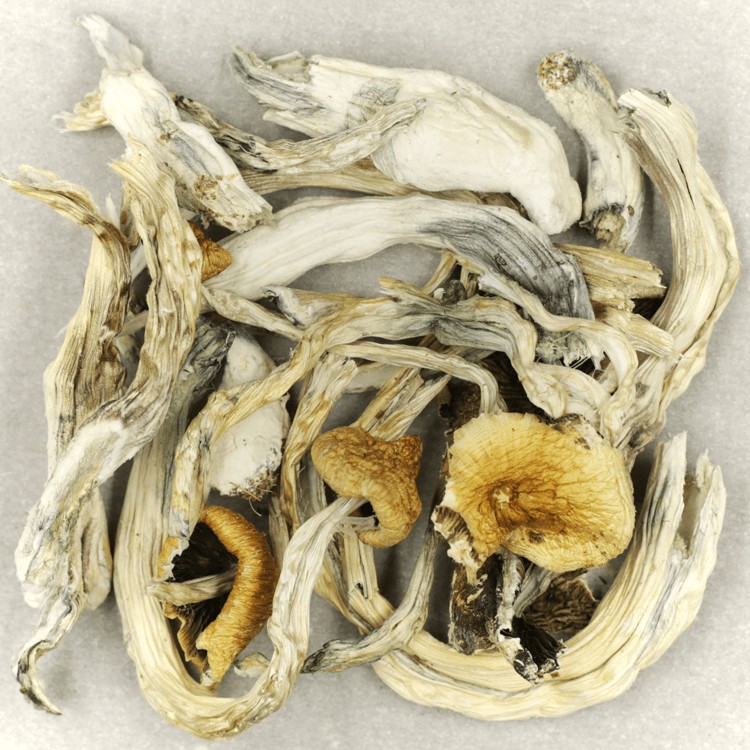The Treasure Coast Mushroom strain of magic mushrooms is widely recognized for its potent ability to stimulate creativity and promote innovative thinking.
Many writers often encounter a creative block, which is an issue that hinders the formulation and execution of fresh ideas.
In some cases, this creative block may be induced by psychological factors such as the fear of criticism, the pursuit of perfection, or external pressures. Although there are numerous strategies to combat this, shrooms can offer some individuals a faster and more significant pathway to innovative thinking.

Key Takeaways:
- Treasure Coast mushrooms enhance creativity by promoting divergent thinking.
- The high concentration of psilocybin temporarily disrupts the brain’s default mode network, fostering spontaneous creativity and introspection.
- Even a week after consuming psilocybin, it can still boost creativity by enhancing the ability to generate new ideas.
Getting to Know Treasure Coast Mushrooms:
Known scientifically as Psilocybe cubensis, these mushrooms originate from the Treasure Coast region of Florida, giving them their name. They are particularly notable for their quick growth rate.
- They feature a distinctive caramel to golden brown cap which can grow up to 5 centimeters in diameter.
- The cap has undulating edges and resembles a miniature sombrero.
- Underneath the cap, there is a dense gill layer that varies in color from light yellow to a deeper brown hue.
- Upon reaching maturity, the mushroom leaves behind a purplish-black spore print.
- The stem is solid and sturdy, with a height span of 5 to 15 centimeters. It often exhibits a blue coloration when handled, which isn’t merely aesthetic; it’s a chemical reaction signifying the presence of psilocin, a powerful psychoactive compound that affects the brain.
Note: When discovered, strains can produce less pigmented variants, known as leucistic strains, which strikingly resemble the original.
Effectiveness and Impact
While it may not rival the strength of powerful strains like Penis Envy, it nonetheless provides a psychedelic experience that is far from typical. Users have reported common psilocybin effects such as mood changes, enhanced perception, and insightful realizations.
Brief Historical Context in Cultural Environments
Historically, the consumption of mushrooms can be traced back to ancient civilizations, demonstrating their use in spiritual and healing rituals from Mesoamerica to modern-day Canada.
These enigmatic fungi were used by indigenous societies in ceremonies to establish deep spiritual connections, using their visionary properties for healing and strengthening community ties.
The Science Behind Psilocybin’s Impact on Creativity
A recent study highlighted in the Journal of Transnational Psychiatry used ultrahigh-field multimodal brain imaging to study these effects in real-time. The study discovered that psilocybin amplified the connectivity within and between different brain networks, leading to an increase in “spontaneous” creativity.
Altering Perception and Cognitive Function
After ingestion, psilocybin reaches peak levels in the bloodstream (15.61 ng/mL) about 80 minutes later, causing reported shifts in sensory perception and cognitive performance.
- Colours seem more vivid
- Objects may appear to pulse or change
- Alterations in spatial awareness may occur
An increase in glutamate concentrations was observed in the medial prefrontal cortex, an area linked to complex thinking and decision-making. On the other hand, glutamate levels in the hippocampus, a region associated with memory, decreased.
Research Conclusions
Does psilocybin boost creativity, or is it simply Does perception play a role? A study conducted by the Journal of Transnational Psychiatry sought to answer this question by examining the difference between “spontaneous” and “deliberate” creativity.
Spontaneous creativity refers to sudden, raw ideas that spring up in one’s mind, while deliberate creativity involves focused problem-solving and task-oriented thought processes. Researchers have found that spontaneous thought patterns tend to increase, while deliberate ones are temporarily impeded.
- Tasks such as the Picture Concept Task (PCT) and the Alternative Uses Task (AUT) were used to measure the participants’ creativity, yielding highly reliable scores of 0.95 and 0.91 respectively.
- After consuming the substance, participants reported a heightened sense of insightfulness, suggesting a stronger connection to new ideas.
- The participants’ task-focused thought processes decreased, likely due to the brain’s newfound, unrestricted connections overshadowing the traditional, sequential problem-solving process.
- Participants exhibited a rise in the generation of novel ideas seven days post-exposure, suggesting that the brain’s reconfiguration could have a long-lasting effect, enhancing creativity even after the consumption period.
Divergent Thinking and Problem Solving
Divergent thinking, the capacity to devise multiple solutions to a single problem, is a fundamental aspect of creativity. The compound, by breaking down conventional thought barriers, allows the brain to consider ideas that would typically be rejected as irrational or improbable.
Psychedelic substances that contain enough milligrams to cause hallucinations target the serotonin 5-HT2A receptors in the brain, interrupting usual thought patterns and fostering cognitive flexibility and divergent thinking. This process could potentially provide a gateway to access creativity.
Tips for Writers Interested in Treasure Coast Mushrooms
Feeling stuck in a creative rut? You may want to consider the potential creativity enhancement that mushrooms can provide. For those new to this, it’s recommended to start with small doses to safely experience the creativity-boosting effects of this fascinating substance.
Dose Recommendations for Creative Exploration
| Microdose (0.1 – 0.3 grams) | This dose won’t trigger visual effects, but it can enhance focus, mood, and creativity without altering your routine. |
| Low Dose (0.5 – 1 gram) | This dosage may boost altering sensory perception and mood with slight distortions. |
| Moderate Dose (1 – 2 grams) | At this dosage level, expect more noticeable effects such as visual distortions, an intensified sense of interconnectedness, and stronger emotional responses. |
Understanding the Importance of “Set” and “Setting”
- Set: Reflect on your goals prior to the session. Are you looking to brainstorm new ideas? Explore the depths of your character’s mind. Enter the session with an open mindset, prepared for potential psychological exploration.
- Setting: Choose a safe, familiar space. Think about a calm room, possibly accompanied by mood-enhancing elements like soft lighting, gentle instrumental music, and a handy notepad. If possible, let a trustworthy friend know about your session or ask them to be a sober, supportive “trip-sitter”, just in case.
Experiments to Try While Under the Influence
Freeform Thought Writing
Psilocybin often lowers one’s usual inhibitions, enabling thoughts to flow freely. This involves writing down whatever comes to mind without self-editing, critiquing, or worrying about its logical consistency.
Continuous Association
An interesting experiment is to write down words as they come to mind, even if they seem unrelated. This could possibly connect disconnected thoughts, so jot down any words that come up, follow the thought trail wherever it goes, and try to discover new themes or patterns for your work.
Engaging with Characters
If you’re writing fiction, think about initiating direct dialogue with your characters. This may blur the lines between the creator and the created, allowing you to delve into varying viewpoints. Ask questions like, “What would you like to do next?” or “What are you afraid of?” Write down their “answers” as they come to you.
Wrapping Up Your Visionary Journey
As a member of the Psilocybe cubensis family, Treasure Coast has properties that are favorable to the creative process, fostering increased introspection, sensory perception, and openness.
For writers, it’s not just
Creativity is about more than fleeting moments of inspiration. It requires harnessing tools that can overcome creative roadblocks, enhance sensory details, and promote unique expressions. Remember, psilocybin, available from a shroom online, aids creativity but doesn’t replace talent or hard work.
Frequently Asked Questions
How can one reflect upon and incorporate their psilocybin experience?
After a session, writers should review their notes or recorded thoughts, identifying any consistent motifs, symbols, or emotions that align with their work. Keeping a “trip journal” and summarizing new ideas or emotional shifts can help them comprehend their experience.
How long do the creative effects of Treasure Coast mushrooms last?
The effects last for 4-6 hours, but the boost in creativity can extend for several days. An increased ability to generate original ideas can persist even a week post-session. This “afterglow” phase, marked by greater open-mindedness and cognitive flexibility, is an ideal time to refine or develop the ideas explored during the experience.
Have any famous writers or artists used psychedelics for creative inspiration?
Author Aldous Huxley experimented with mescaline and later LSD, documenting his experiences in The Doors of Perception. Counterculture writers like Allen Ginsberg and Jack Kerouac, along with musicians such as The Beatles, are also known for their use of psychedelics.
Although they did not specifically use Treasure Coast, their work exemplifies the enduring link between psychedelics and creativity in art and literature.





